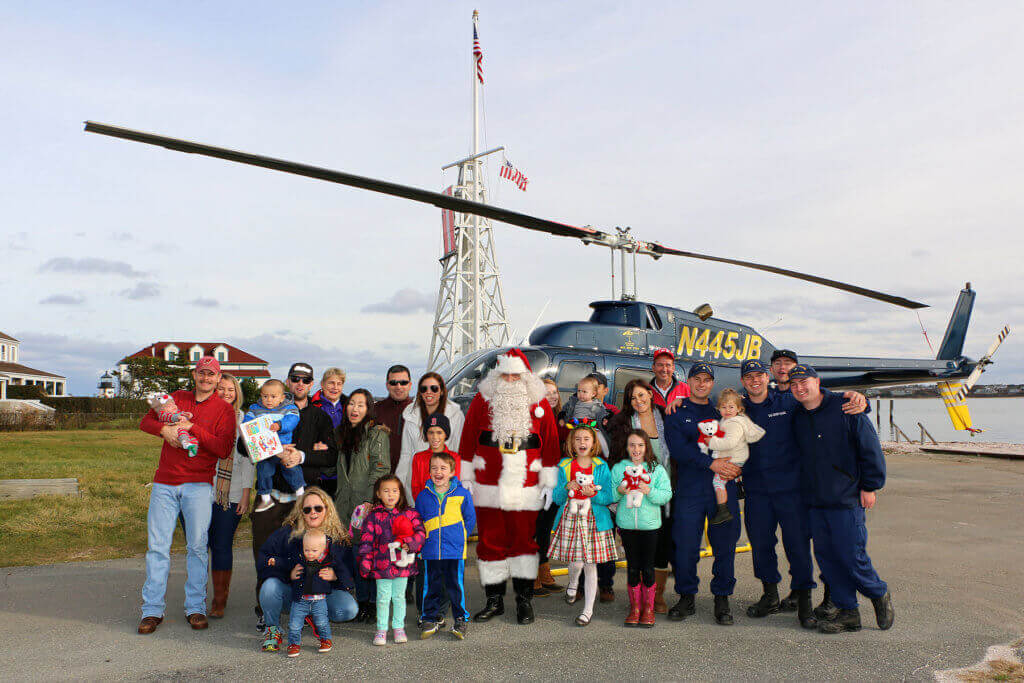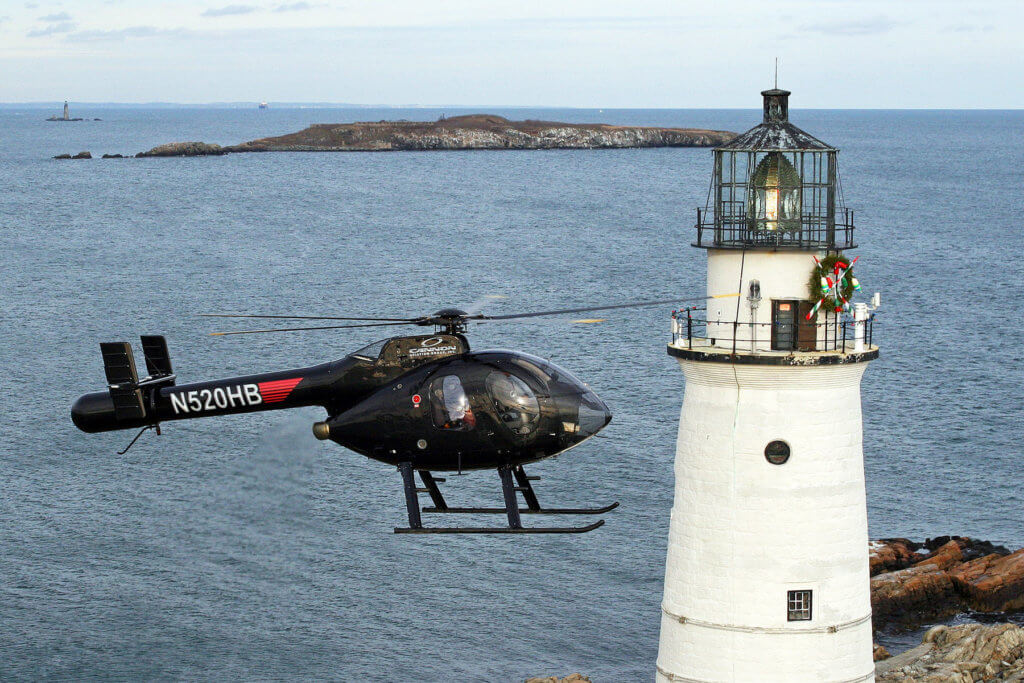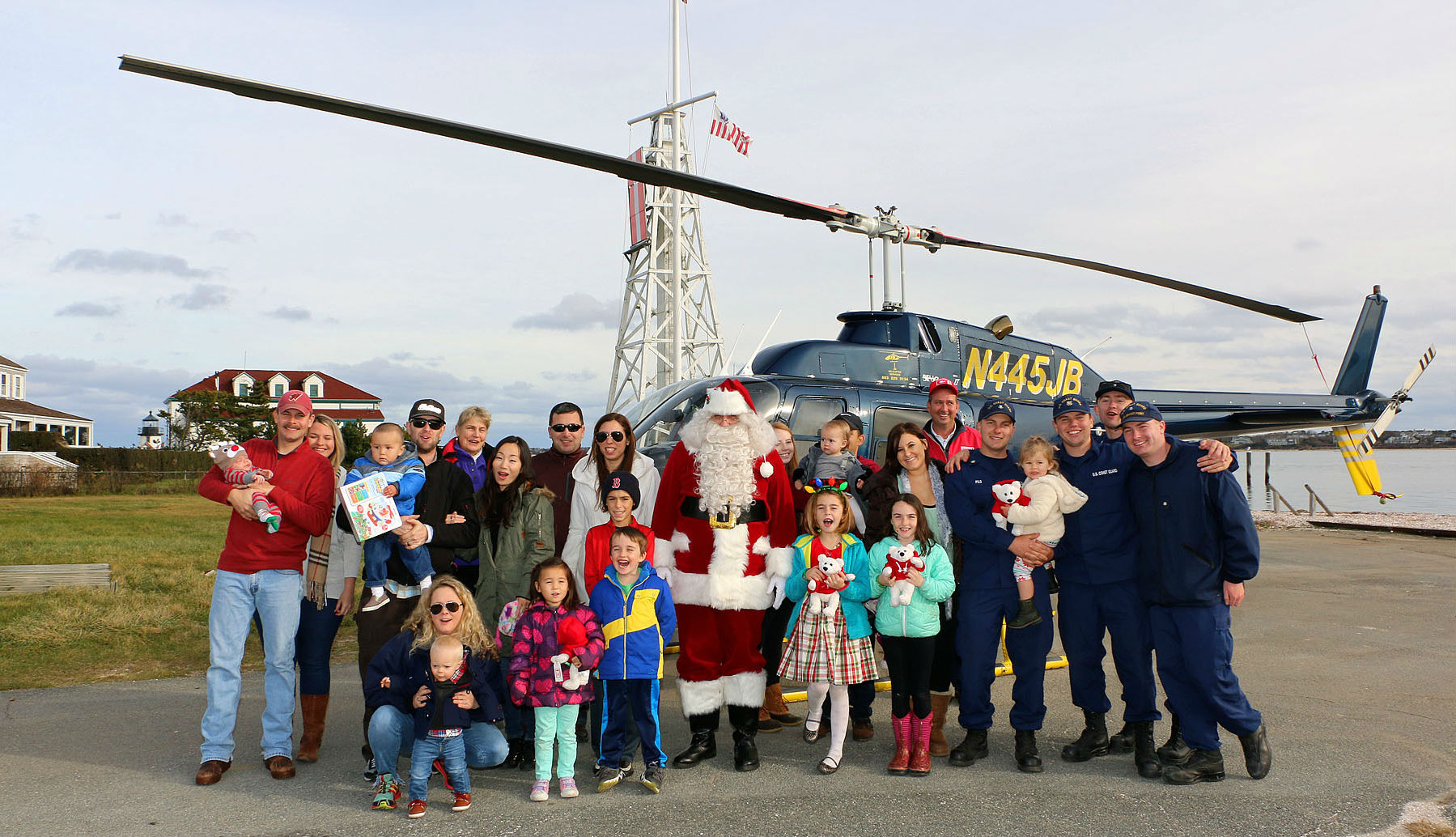With Christmas Eve fast approaching, it may come as a surprise to learn that Santa has been preparing his helicopters — in addition to his reindeer — to deliver early holiday gifts to 1,200 children along the northeastern coastline of the United States.

The recipients are all children of U.S. Coast Guard (USCG) personnel, and the annual event, organized by Friends of Flying Santa, of Stoneham, Massachusetts, is a New England tradition that reaches back to the early days of aviation in 1929.
The gift-giving was established by pioneering float plane pilot William Wincapaw to thank the families of lighthouse keepers each Christmas, with presents well-packed and thrown down to the children below. The event has run unbroken every year since, and today, it sees Santa utilize a fleet of four helicopters to fly to 80 Coast Guard units in 33 locations, ranging from the Canadian border down to Long Island.
“It’s a gesture of appreciation for the Coast Guard crews and their families,” said Brian Tague, who coordinates the program, and has volunteered with it for the last 27 years. “As long as the [Coast Guard] is doing its job, we’re going to keep doing ours and say thanks for what they do.”
Due to the uncertainty of the weather at the end of December, the Friends of Flying Santa team gears up for four days of toy-delivering flights shortly after U.S. Thanksgiving, across late November and early December. Each flight covers a different route: New Hampshire to Maine; the Massachusetts region; New York to Connecticut to Rhode Island; and Plymouth to Boston – with each route allowing for 10 to 12 stops.

There can be as many as 240 children at each stop, with the helicopter typically arriving as part of a wider Christmas party at the base — with children treated to face-painting, crafts, gingerbread house-building, and movies while they wait for Santa to arrive.
“They get excited about listening for the helicopter [and] what direction it’s going to come from,” said Tague. “When the door opens and Santa jumps out with a bag of toys, we can see the kids jumping up and down and cheering. The parents will tell us that the young kids, especially — they don’t know about Santa and reindeer, they just know that Santa comes in a helicopter. They say during the year, every time a helicopter flies over, they think it’s Santa Claus.”
Depending on the size of the base, Santa spends anywhere from 20 minutes to two hours giving out gifts and chatting to the children. The children’s names and ages are gathered a month in advance to be able to deliver a personalized and age-appropriate gift.
In keeping with the connection to the USCG, this year, the role of Santa was shared by retired USCG chief petty officer Bill Donahue, retired USCG chief warrant officer Tom Guthlein, and active duty USCG CWO John Roberts.

As the aircraft are unable to carry all the gifts required for a day at once, they pick them up between stops at pre-determined restocking points.
The gift-giving days are long — each flight crew can expect roughly an 11-hour day of travel. “You’re up at 3 a.m. getting to the hangar [and] getting the helicopter loaded up, and you’re back by about 6:30 p.m.,” said Tague. “It wears you out, but it’s well worth it — I couldn’t imagine not doing it.”
To help keep the program’s costs to a minimum, Friends of Flying Santa relies on sponsors who donate their aircraft while also covering fuel costs. This year, seven pilots volunteered their time to fly four donated aircraft, including an Airbus EC120B (H125; donated by Heliops), a Bell Jet Ranger (donated by JBI Helicopters), a Bell LongRanger III (donated by pilot Bill Poduska), and an AS350 B3 (donated by Tuckamore Aviation).
Hundreds of hours of volunteer work are poured into the program, including toy shopping, sorting, labeling, and wrapping. A Coast Guard crew in Boston takes a half day at their base to wrap all the gifts. They are then delivered to Tague’s house, and he takes care of the labelling, sorting and bagging. “My living room basically looks like the North Pole exploded. . . . It’s probably three months of full-time work for me to get the program [ready] to begin the flights,” he said. “But it’s so rewarding.”

Along with this volunteer work is the fundraising that takes place in order to buy the toys. The program organizes boat cruises and bus tours to lighthouses in Cape Cod, Martha’s Vineyard, Nantucket and more to raise money for the end-of-year flights. Regular sponsors of the program also step up each year with generous contributions. And with no paid staff and no helicopter costs, 100 percent of the funds go towards the toys.
Those who fly with Friends of Flying Santa often comment on how much they enjoy the special journey each year. Tague said it’s a nice change for pilots to be able to land in what are often unique and small areas, and, most of all, to see the reception they get from the children and their parents. “Almost every pilot we’ve had has told us that it’s their best day of flying all year,” he added.
And, as member of the board of directors of the New England Helicopter Council, he said a valuable side effect is the positive association it builds with rotary-wing flight.
“It’s really been one of the great things about Flying Santa — we’ve never had a noise complaint… it’s putting helicopters in a good light,” he said. “The public gets to see them up close . . . the pilots are great about explaining how they work — it’s good PR for the helicopter community.”









